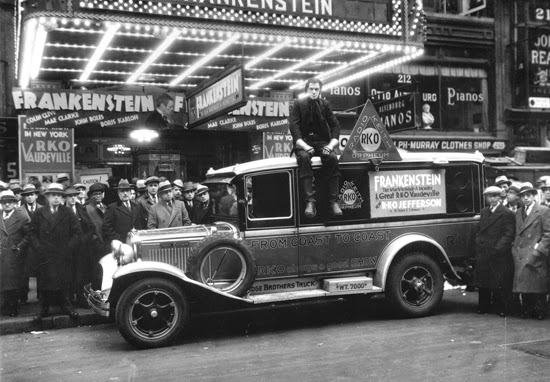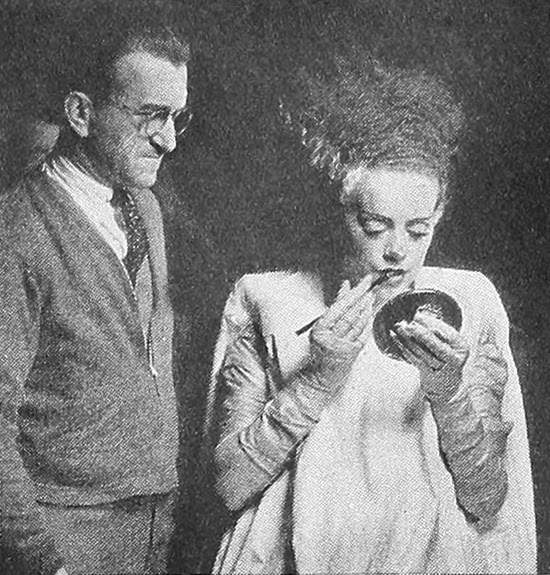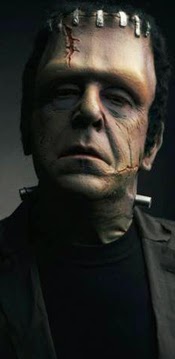2013 was a great year for Frankensteinia.
Almost exactly a year ago, I traveled to Paris and London where I did some serious research for this blog and I was treated, thanks to my friend David Saunderson of The Spooky Isles, to an unforgettable “Frankensteinia Night” at a London pub with invited genre writers, film historians, editors and publishers and other instant friends, a dozen in all. It was a memorable kick off to the year and, now, to bookend the backend, the 12th Annual Rondo Hatton Classic Horror Awards have been announced and I am delighted and frankly excited that Frankensteinia has generated three nominations!
Almost exactly a year ago, I traveled to Paris and London where I did some serious research for this blog and I was treated, thanks to my friend David Saunderson of The Spooky Isles, to an unforgettable “Frankensteinia Night” at a London pub with invited genre writers, film historians, editors and publishers and other instant friends, a dozen in all. It was a memorable kick off to the year and, now, to bookend the backend, the 12th Annual Rondo Hatton Classic Horror Awards have been announced and I am delighted and frankly excited that Frankensteinia has generated three nominations!
Here they are, for your kind consideration…
1) Frankensteiniahas been nominated as Best Blog!
Here’s hoping we can get over the hump after coming in First Runner-Up the last two times out! I am very proud of our offerings this past year. Some highlights:
We found some rare Frankenstein appearances, notably Billy De Wolfe’s comic turn in BLUE SKIES (1946) here and here, and a couple of British entries in THURSDAY’S CHILD(1943) here and here, and DANCE HALL (1950) here.
Doing some Frankenstein archeology, we found the site of the bakery that inspired the Windmill scene in the original FRANKENSTEIN of 1931. A great photo of Ed Payson in the makeup chair turned up, halfway through his transformation into the Frankenstein Monster for the 3-D short THIRD DIMENSIONAL MURDER (1941). In a perfect case of Monster Kid prehistory, we discovered what is one of the earliest, if not very first incident of Frankenstein cosplay, so to speak, in a press review entitled Gandhi Hob-Knobs with Frankensteinfrom February 1932. Also (with thanks to our friend George Chastain), we dug up a pre-Famous Monsters Forry Ackerman article entitled Frankenstein’s Bébé — Brigitte Bardot!
A personal favorite from 2013 was my Shock Theater Frankenstein series of articles revealing the early promotional efforts and rubber-mask Frankenstein appearances that helped launch the Monster Boom back in the Fifties.
Saint Peter’s anniversary was celebrated with the help of 30 bloggers, contributing some 80 fabulous articles, reviews, opinions, revelations and loving appreciations.
3) Richard Harland Smith’s contribution to the Peter Cushing Blogathon, The Peter Cushing Nobody Knows, is up for Best Article!
RHS has been a friend of Frankensteinia from day one and I was knocked out by his brilliant essay on Cushing’s early, non-horror roles, posted over at TCM’s Movie Morlocks. Smith is also nominated for Best Commentary for THE DEVIL BAT.
There you have it. Now it’s your turn: You have until May 5 to vote, but don’t wait: You can vote right now, in as many or as few categories as you are comfortable with, and it’s all done painlessly through email.
Should you wish to support our nominations, vote Frankensteinia in Category 19, Best Blog; Peter Cushing Centennial Blogathon in Category 21, Best Fan Event, and The Peter Cushing Nobody Knows by Richard Harland Smith in Category 13, Best Article.
If you enjoy this blog, you are also welcome to include yours truly, Pierre Fournier, in the write-in Category 28, Best Writer.
Here’s the Rondo Ballot, with tons of great stuff to discover. Congratulations to ALL the nominees!























 I sent away for the book and would spend the next year or two experimenting with monster makeup. I hunted down the suggested ingredients, esoteric stuff like spirit gum, collodion and thick, smelly liquid latex.
I sent away for the book and would spend the next year or two experimenting with monster makeup. I hunted down the suggested ingredients, esoteric stuff like spirit gum, collodion and thick, smelly liquid latex.











